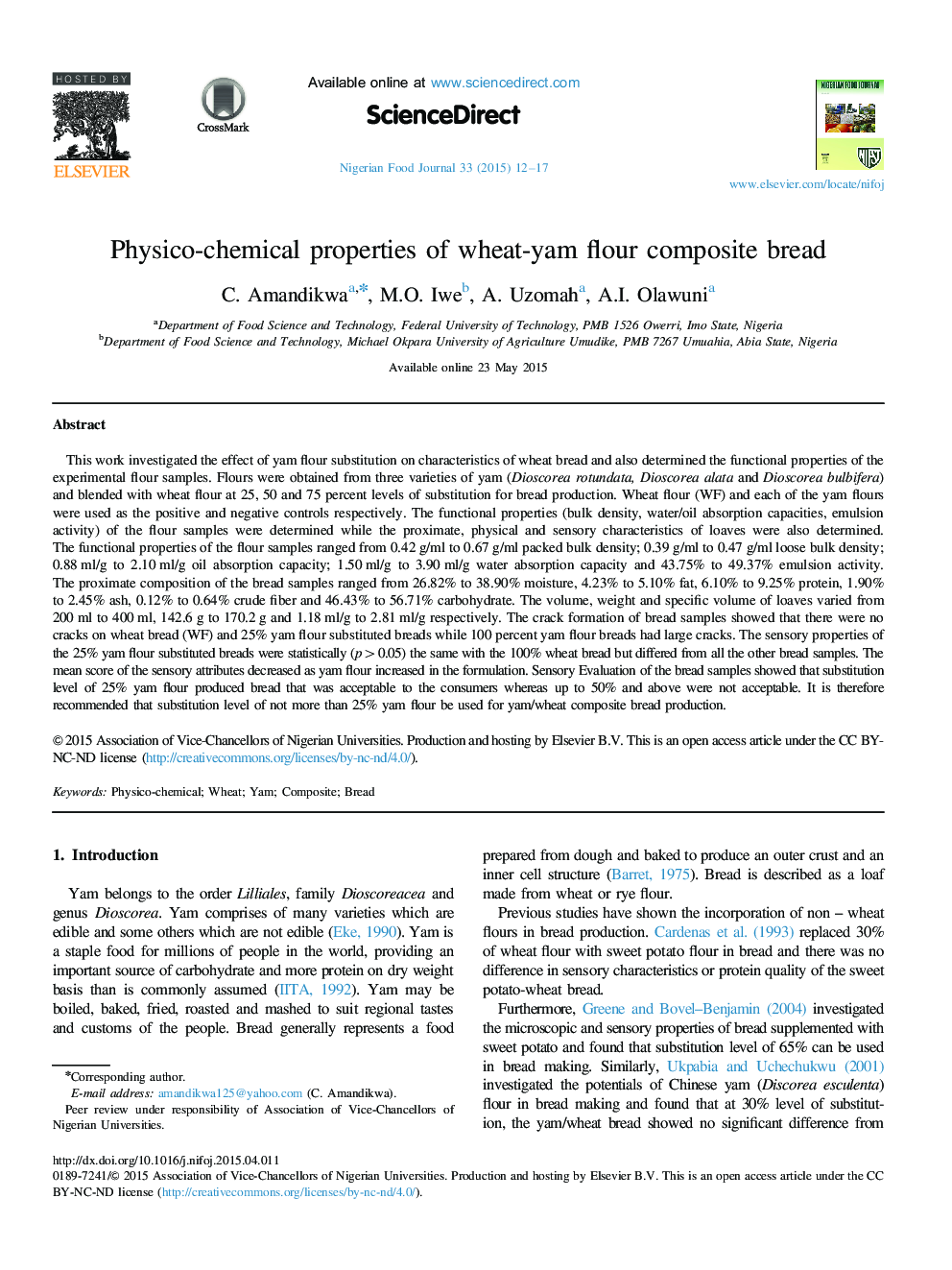| کد مقاله | کد نشریه | سال انتشار | مقاله انگلیسی | نسخه تمام متن |
|---|---|---|---|---|
| 4565657 | 1628536 | 2015 | 6 صفحه PDF | دانلود رایگان |
This work investigated the effect of yam flour substitution on characteristics of wheat bread and also determined the functional properties of the experimental flour samples. Flours were obtained from three varieties of yam (Dioscorea rotundata, Dioscorea alata and Dioscorea bulbifera) and blended with wheat flour at 25, 50 and 75 percent levels of substitution for bread production. Wheat flour (WF) and each of the yam flours were used as the positive and negative controls respectively. The functional properties (bulk density, water/oil absorption capacities, emulsion activity) of the flour samples were determined while the proximate, physical and sensory characteristics of loaves were also determined. The functional properties of the flour samples ranged from 0.42 g/ml to 0.67 g/ml packed bulk density; 0.39 g/ml to 0.47 g/ml loose bulk density; 0.88 ml/g to 2.10 ml/g oil absorption capacity; 1.50 ml/g to 3.90 ml/g water absorption capacity and 43.75% to 49.37% emulsion activity. The proximate composition of the bread samples ranged from 26.82% to 38.90% moisture, 4.23% to 5.10% fat, 6.10% to 9.25% protein, 1.90% to 2.45% ash, 0.12% to 0.64% crude fiber and 46.43% to 56.71% carbohydrate. The volume, weight and specific volume of loaves varied from 200 ml to 400 ml, 142.6 g to 170.2 g and 1.18 ml/g to 2.81 ml/g respectively. The crack formation of bread samples showed that there were no cracks on wheat bread (WF) and 25% yam flour substituted breads while 100 percent yam flour breads had large cracks. The sensory properties of the 25% yam flour substituted breads were statistically (p>0.05) the same with the 100% wheat bread but differed from all the other bread samples. The mean score of the sensory attributes decreased as yam flour increased in the formulation. Sensory Evaluation of the bread samples showed that substitution level of 25% yam flour produced bread that was acceptable to the consumers whereas up to 50% and above were not acceptable. It is therefore recommended that substitution level of not more than 25% yam flour be used for yam/wheat composite bread production.
Journal: Nigerian Food Journal - Volume 33, Issue 1, June 2015, Pages 12–17
